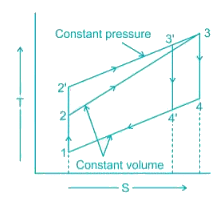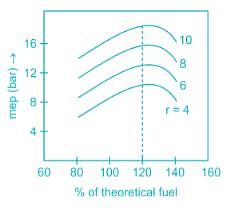IC Engine - 2 - Mechanical Engineering MCQ
21 Questions MCQ Test SSC JE Mechanical Mock Test Series 2025 - IC Engine - 2
The efficiency of Diesel cycle approaches to Otto cycle efficiency when:
A diesel engine has a compression ratio of 20 and cut-off takes place at 5% of the stroke. What is the cut-off ratio?
| 1 Crore+ students have signed up on EduRev. Have you? Download the App |
A fuel is a mixture of 60% methane and 30% carbon mono-oxide and 10% oxygen by volume. Calculate the stoichiometric oxygen needed.
An SI engine sometimes continues to run for a very small period even after the ignition is switched off. This phenomenon is called
An SI engine sometimes continues to run for a very small period even after the ignition is switched off. This phenomenon is called
The three way catalytic converter cannot control the following emission
A single - cylinder engine running at 1800 rpm develops a torque of 8 N - m. The indicated power of the engine is 1.8 kW. The loss due to friction power in the percentage is
Mean effective pressure at a given compression ratio is maximum when the air-fuel ratio is
In SI engines, maximum flame speed is obtained when the equivalence ratio is between
A gas engine has a swept volume of 200 cm3 and clearance volume 20 cm3. The mechanical efficiency is 0.9 and the volumetric efficiency 0.85. The volume of the mixture taken in per stroke will be
Engine of different cylinder dimensions, power and speed are compared on the basis of
|
3 videos|1 docs|55 tests
|
|
3 videos|1 docs|55 tests
|




























